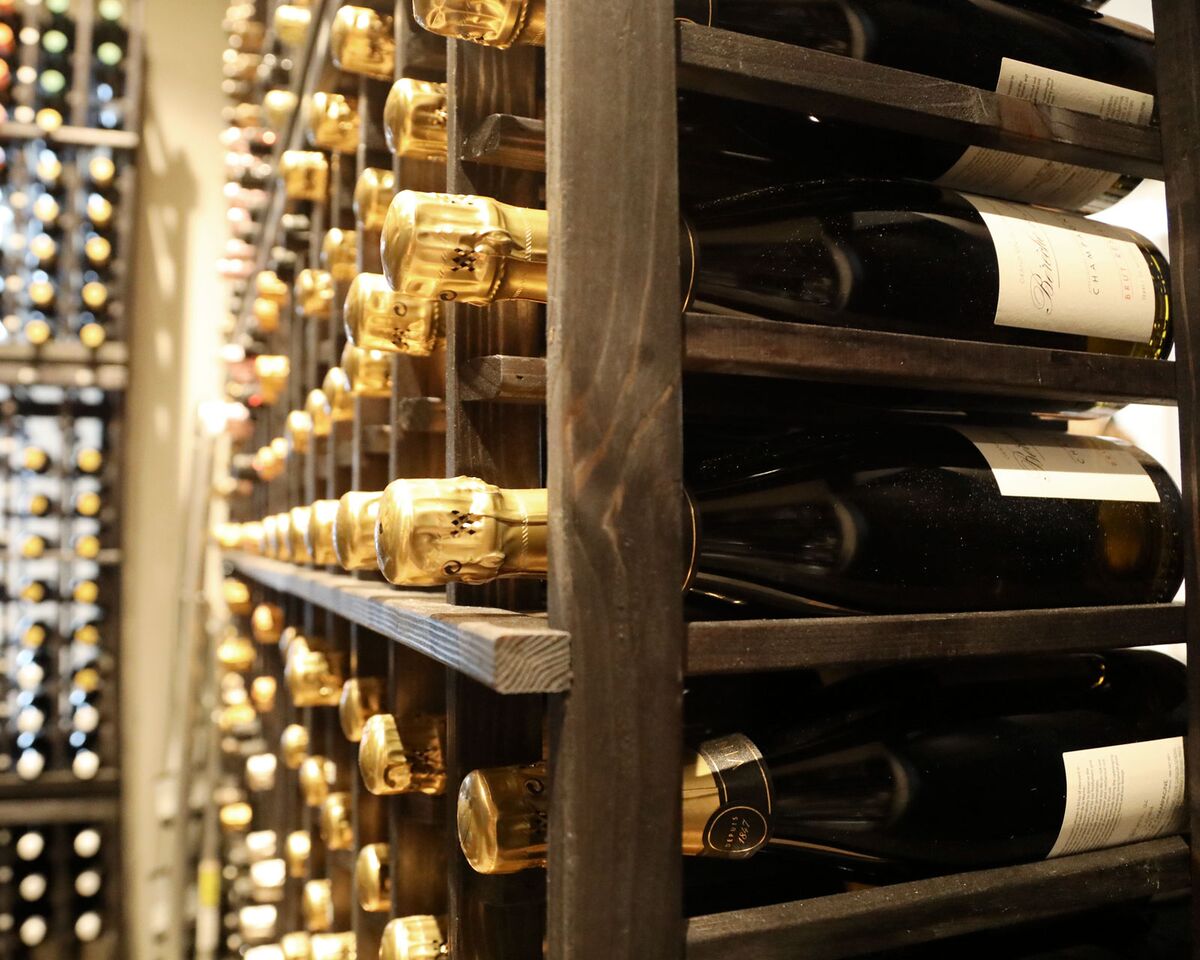The Local newsletter is your free, daily guide to life in Colorado. For locals, by locals.
If you know your cream ales from your quadrupels and your Sidecars from your Sazeracs, there’s no reason you can’t learn your Burgundy from your Barolo, too. In this series, we’ll demystify the world of wine—because Denverites deserve to enjoy the spirit of the grape as much as they do those of the grain.
Sparkling wine, otherwise known as Champagne, should only be served in flutes as an apéritif on special occasions with sophisticated hors d’oeuvres such as oysters.

If the previous sentence sounds about right, you’re in for a surprise: It’s erroneous on every count. And when you understand why, you’ll also understand why bubbly—be it Champagne, Prosecco, or cava—belongs in your regular rotation. Here, we burst the bubble on four pervasive sparkling wine myths, as well as highlight a few of the best places in town to sip the good stuff.
Misconception one: All sparkling wine is Champagne
The only sparkling wine dubbed “Champagne” is that which comes from the namesake French region. There, it’s made almost exclusively with Pinot Noir, Chardonnay, and/or Pinot Meunier grapes by a painstakingly complex process called the méthode champenoise. But sparkling wine in general is produced across the globe, from Spain and Italy to England and New York—and it’s all over the map stylistically as well as geographically speaking. It can showcase myriad grape varieties, and be vinified by all sorts of methods. It can boast aggressive bubbles or a gentle effervescence. It can be bone-dry or quite sweet. It can be white, pink, or even red. (But note that wine color doesn’t always correspond to grape color; for instance, a Blanc de Noirs—literally “white from blacks”—is a white wine made without skin contact from dark grapes.)
Try It: At Union Station’s Tavernetta, you can kick off a meal with the house Prosecco or even a dry red sparkler called Lambrusco from the Emilia-Romagna region of Italy, then end on a dessert-worthy Moscato d’Asti from nearby Piedmont. At Rioja, you can explore different types of Spain’s famous cava, including Brut Rosé and Brut Nature (a bracingly dry style without any of the residual sugar that most bubbly contains). And though England’s much-buzzed-about sparkling wines remain scarce stateside, we’ve seen the occasional bottle at Mizuna.
Misconception two: Sparkling wine is expensive
Given such variety, it only follows that sparkling wine also spans a wide price scale. Sure, some bottles can fetch exorbitant sums—Champagne especially, hence its reputation as a celebratory quaff. But plenty of bubbly is inexpensive enough for everyday drinking. The selection at Hop Alley is an exhilarating case in point, reflecting wine director Matt Mulligan’s passion for uncommon, small-production, affordable (mostly $50 or less) gems from France and beyond.
But from a quality-to-price perspective, there’s good value to be found even amongst Champagnes. At Bar Helix—where even the splashy decor alludes to bubbles—owner Kendra Anderson sells glasses of Ruinart for $20 a pop; despite “losing money on a glass pour,” she says, the long-term goal is to “make money by creating a lifelong fan of Champagne” who can then move on to other luxury offerings and cool alternatives like Crémant de Jura (Jura being another region of France that produces Champagne-method sparklers, known by the differentiating term crémant). Tavernetta wine director Carlin Karr aims to do the same by offering, say, Krug Grand Cuvée by the glass for $40—a steal considering the bottle price is $361. Karr also offers half-pours for curious diners who might want to evaluate a prestige brand against a cult-grower Champagne (that is, farmer-made fizz).
Try It: Mulligan’s an avid fan of Renardat-Fâche Cerdon du Bugey ($50), an off-dry sparkling rosé from eastern France whose sprightly sweetness cuts the heat of Hop Alley’s “la ji zi” (Sichuan fried chicken); he sells it by the glass, too.
Misconception three: Sparkling wine should always be sipped from a flute
The tall, slender glasses known as flutes have their appeal: They convey elegance and festivity, which is why restaurateurs continue to use them. But they’re not actually the best stemware for good bubbly, as their shape impedes your ability to detect its nuances. Noting that “most Champagne producers drink it from a white-wine glass,” Anderson sometimes serves it that way so you can “better appreciate the aromatics, preserve the bubbles, and all that jazz.” But equally important to her is the fact that a regular glass “shifts the perception away from toasting” and toward a realization that it’s “just wine—sit down with it and enjoy it.”
Try It: The next time you and a companion both order bubbly, ask the server to bring one order in a standard glass so you can compare notes on the nose.
Misconception four: Sparkling wines only pair with luxe bites
You bet bubbles rock with oysters, but that’s just the beginning. Sommeliers love sparkling wine for its “versatility with a wide variety of foods,” says Karr, be it a “bright, citrusy” Blanc de Blancs alongside seafood or a “more red-fruited, expansive” Blanc de Noirs with pasta. For one thing, Anderson explains, “its acidity acts like a squeeze of lemon over fish—it’s a flavor enhancer.” For another, its effervescence cleanses the palate. Combined, those qualities make bubbly suitable for pairing with everything from fried chicken and burgers to spicy Indian and Chinese food (as at Hop Alley).
Try It: The ultimate high-low combo of Champagne with potato chips (Ruffles, naturally) and smoked-salmon-caviar-crème-fraîche-dip at Bar Helix.
The ultimate takeaway? When in doubt, order bubbly.
Bar Helix: 3440 Larimer St., 720-449-8587; Hop Alley: 3500 Larimer St., 720-379-8340; Tavernetta: 1889 16th St., 720-605-1889








